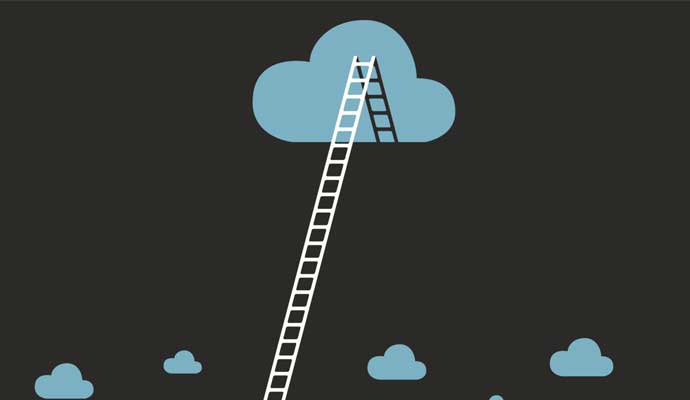Why Higher Minimum Wages Might Be the New Normal
As companies such as Walmart, Aetna, and Facebook start paying their workers more, others sense a change in the air.
The norms they are a-changin. It’s not quite Bob Dylan, but this bowdlerization of the 1960s protest-era song speaks to a larger truth: Widely held beliefs about issues — and the sense of what is acceptable — can change quite quickly. Perhaps the most extraordinary example has been in public attitudes toward gay marriage in the U.S. According to Gallup, the percentage of people who agree that same-sex marriages should be legal generally hovered in the 42 to 44 percent range between 2004 and 2010. But in the last five years, the percentage of those approving has climbed consistently— to 60 percent in May 2015.
We are seeing something similar start — but just start — to happen when it comes to wages for those on the lower rungs of the income ladder in the U.S.
The federal minimum wage has been stuck at US$7.25 since 2009, and shows no signs of budging. In the years after the Great Recession of 2007–2009, companies aggressively held the line on wages for all employees. A new set of norms seemed to take hold surrounding compensation: Even as revenues and profits soared, even as stocks doubled from their 2009 lows, companies didn’t feel compelled, or obliged, to boost wages. As a result, median household income in the U.S. in 2013 stood at $51,939 — below what it was in 2007, and below what it was in 1999. Simply put, the typical American worker hasn’t received a salary increase in 15 years.
But in the past year, we have seen signs that the assumptions regarding appropriate wage levels are starting to change — and quickly. Changing societal norms are often expressed as legislation. And although there has been no action at the federal level, there has been a flurry of activity at the state and local level — in red states and blue states alike. At the beginning of 2014, 13 states raised the minimum wage. Many did so far above the federal level of $7.25: $9.00 in California, $8.00 in Colorado. In the fall of 2014, voters in four heavily Republican states — Arkansas, Alaska, Nebraska, and South Dakota — approved ballot measures to boost the state minimum wage. Several cities have gone much further. Seattle in 2014 enacted a law that will raise the minimum wage to $15 per hour in coming years. Los Angeles is considering a similar measure.
For several years, labor unions and fast-food workers have been trying to put pressure on large companies and franchise owners by demonstrating and striking for a $15 minimum wage. On April 15, 2015, some 60,000 people participated in activities in 200 cities under the hashtag #Fightfor15.
Minimum-wage laws are powerful, if blunt, instruments. And the repeated staging of public, confrontational events can also influence the decision-making processes of top executives. But when it comes to changing the behavior of companies, nothing is quite as powerful as the action of peers. And in recent months, we’ve seen a series of cascading moves that seem to indicate that norms surrounding wages are changing — at least in some vital industries. (I should note that this is primarily a U.S. phenomenon. In developed economies, such as those of Japan and Western Europe, a deflationary climate and stronger safety nets have tamped down the social and political pressures for wage increases.)
It started when Aetna CEO Mark Bertolini in January decided voluntarily to impose a wage floor of $16 per hour at the insurance company — a move that would immediately affect some 5,700 workers. As my colleagues Jon Katzenbach, Gretchen Anderson, and Art Kleiner noted, it was “arguably the most visible wage hike by a chief executive since 1914, when Henry Ford doubled his assembly line workers’ pay to $5 a day.” Bertolini justified the move on two powerful grounds: social justice and business imperative. Bertolini, who hails from a working-class background, had read Thomas Piketty’s Capital, and was concerned over the rise of income inequality. And when Aetna ran the numbers, it realized that the cost of raising wages — about $10.5 million — could be paid for if such a move were to reduce a chunk of the company’s $120 million in turnover costs. “By that measure, $10.5 million looked like a low-risk investment,” Bertolini said.
For Aetna, the cost of raising wages — about $10.5 million — might reduce its $120 million in turnover costs.
Within a matter of weeks, Walmart — a fellow Dow Jones Industrial Average component with a significantly different business model from Aetna’s — followed suit. Long a target of protests over its wage structure, Walmart in February announced that it would raise its minimum wage for its associates to $9 in April 2015, and to $10 by February 2016. This move by the nation’s largest private-sector employer — Walmart has 1.3 million workers — was couched as a strategic corporate move. “We want to provide a great customers experience, and we want our associates to know how much we value them,” Walmart CEO Doug McMillon told CNBC.
Six weeks later, McDonald’s — like Walmart, a highly visible and massive employer of low-wage workers — said it would raise the minimum wages it pays at the 1,500 company-owned restaurants to a level that is at least $1 an hour above the minimum wages of the states in which they operate. “Motivated teams deliver better customer service,” Steve Easterbrook, who had been installed as CEO a month before the announcement, told the Wall Street Journal, “and delivering better customer service in our restaurants is clearly going to be a vital part of our turnaround.”
As other companies have jumped on the bandwagon, they have brought new wrinkles that are consistent with their identities.
Facebook’s operations are staffed and made possible in large measure by the efforts of lower-wage workers who are employed by contractors — for security, food service, and transportation. On May 13, the company announced it would require its main contractors and vendors to pay a $15 minimum wage, offer 15 paid days off annually, and provide a $4,000 child benefit for parents. (The implication, of course, was that Facebook would essentially be funding these higher wages.) For Sheryl Sandberg, chief operating officer and president, this move was of a piece with her larger advocacy for women in the workplace. “Women, because they comprise about two-thirds of minimum-wage workers nationally, are particularly affected by wage adjustments,” she wrote in a memo.
Nine days later, when Ascension Health, a Catholic nonprofit company that is one of the nation’s largest healthcare systems, announced it would establish an $11 minimum wage at its operations, it used starkly moral terms. “We believe our associates deserve a socially just wage that acknowledges the dignity of the human person and the spiritual significance of the care they provide every day to those we serve and to their fellow associates,” Anthony R. Tersigni, the president and chief executive officer of Ascension, put it in a statement.
These actions, and the words that accompany them, are signs of shifting norms. In each instance, the executives who are raising wages are justifying them not by saying they need to get ahead of changing laws, or to blunt the arguments of protesters. Rather, they are doing it by making the move jibe with a combination of their personal values, corporate cultures, and corporate strategy. They are doing it because they want to, but also because they have deemed it necessary in order to compete. And as they do so, they create new norms.
Is it making a difference? Certainly, these moves are directly affecting hundreds of thousands of workers. And the data is starting to trickle in. Thus far in the expansion, significant and sustained job growth has not resulted in higher wages. But there are signs that pay could be picking up. According to the Bureau of Labor Statistics, in April average hourly earnings for private employees in the U.S. were 2.2 percent higher than they were the year before.




